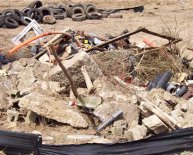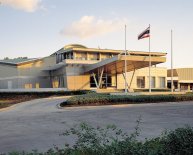September 15, 2020

Waste Disposal Audit
 Reason#1 - Resource Conservation and Recovery Act (RCRA) Liability
Reason#1 - Resource Conservation and Recovery Act (RCRA) Liability
In 1976 the United States Congress passed the Resource Conservation and Recovery Act (RCRA) which provided for “cradle to grave” management of hazardous waste. The law established that it is the generators responsibility to ensure that their hazardous waste is being properly manifested, transported, and disposed/treated at a legally permitted waste facility. But further, RCRA assigns strict liability to the generator of a hazardous waste regarding the proper treatment/disposal of that waste. That means that a generator could be held financially liable for any mismanagement of a waste regardless of their involvement or even knowledge of that mismanagement. Thus, it is important for generators of hazardous waste to ensure their waste is being properly tracked via the manifest system, it is going to a permitted facility, and it is being properly managed and not improperly impacting the environment.
Reason #2 – Comprehensive Environmental Response, Compensation, and Liability Act (CERCLA) Liability
While RCRA addressed active waste management facilities, it did not properly address historic and closed waste disposal facilities. Thus, after a number of these disposal sites (such as Love Canal) became national news, Congress passed the Comprehensive Environmental Response, Compensation, and Liability Act (CERCLA), also known as Superfund. Under CERCLA, if a waste management facility ceases operations and can’t pay to clean-up environmental impacts associated with that Facility (even if the impacts are the result of neighboring sites), any party that sent “hazardous substances” to that Facility (known as a potentially responsible party) can be financial liable for that clean-up. Note that the term used is “hazardous substances”, which includes an extremely broad list of constituents beyond just hazardous wastes. In fact, hazardous substances can be found in just about every industrial waste stream. Furthermore, the strict and joint and several liability for generators under CERCLA is extremely far-reaching. Strict liability means the generator can be held financially responsible for a clean-up regardless of their involvement or knowledge of the events that caused the contamination; and joint and several liability means that a generator can bear the entire cost of the clean-up even if they were one of many parties that sent waste to the facility and/or they only sent a small amount of waste. While it is impossible to predict whether any specific facility will become a Superfund Site, conducting audits of waste/recycling facilities can allow waste generators to make informed decisions regarding the risks associated with their existing and prospective vendors. Furthermore, if waste facilities are subject to regular customer audits it may additionally incentivize them to operate in a more responsible manner than they normally would, and thus minimize their chances of mismanagement.















